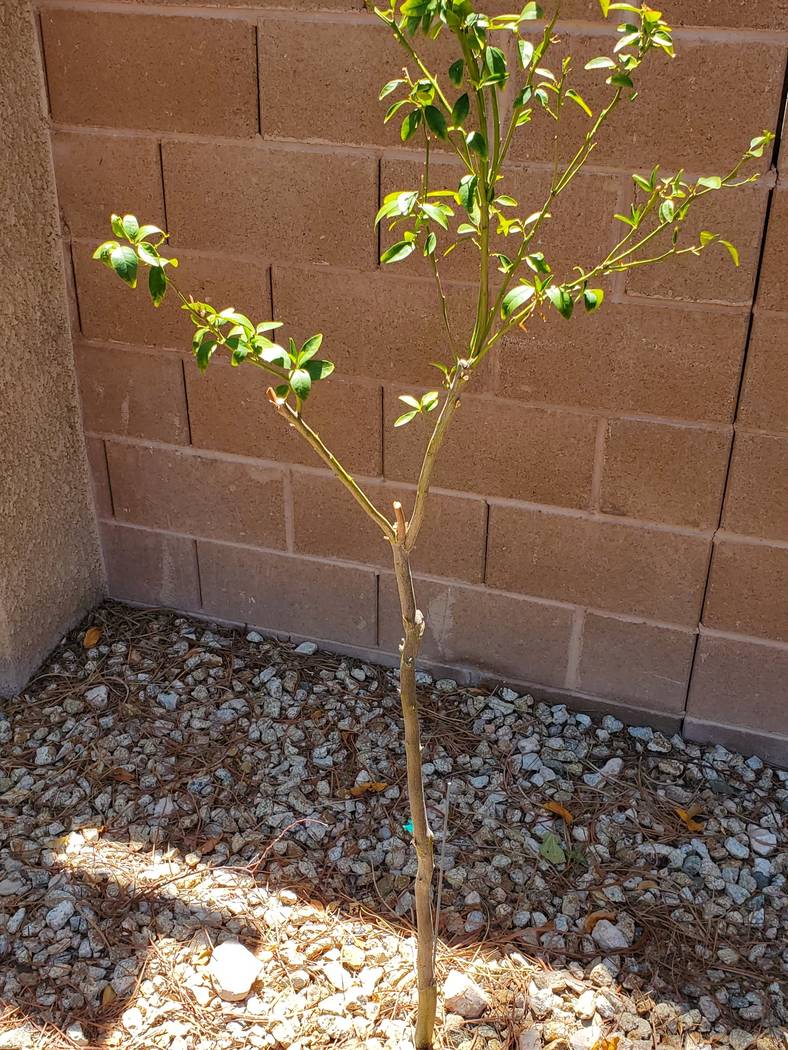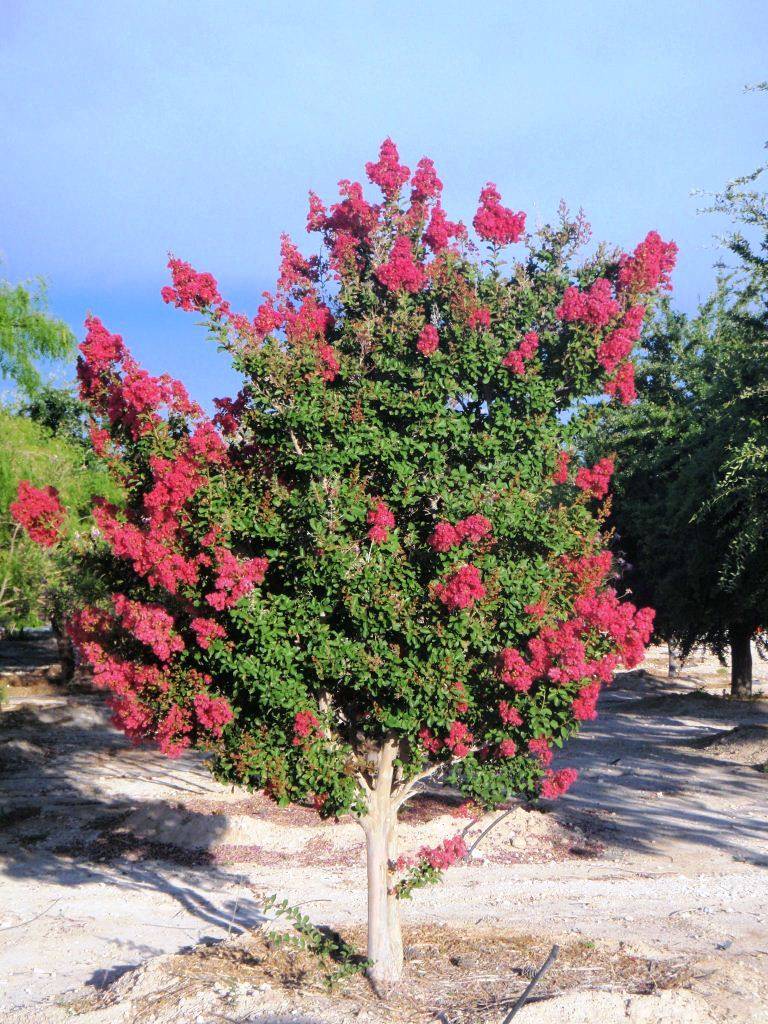Late afternoon direct sun can be damaging to roses
Q: All my roses face north, and some are against a cinder block wall. They get no shade and they really struggle with our summer heat. Most will have to be replaced. I am already looking at roses to plant for next summer. Do you know any varieties that can withstand our summers? Also, how does crepe myrtle handle our summer heat?
A: If your roses are on the north side of a building, then they might get direct sunlight late in the afternoon because of where the sun sets in the summertime. That late afternoon direct sun can be very damaging if they have been growing on the shady north side all day. Healthy plants handle heat better. Plant both in soil amended with good compost.
Somewhat tender plants to our desert climate, like roses and crape myrtle, handle the intense desert heat and sunlight if they are growing in soil amended with organics and the soil is covered with mulch that rots or decomposes. Roses and crape myrtle will struggle after a few years when planted in soils covered by rock. If you want them to look good in years to come, roses and crape myrtle should never be surrounded by rock mulch. Ever.
Always plant in soils that are amended with a decent soil amendment such as compost. After planting, cover the soil with mulch that rots or decomposes such as wood chips. The wood chips on top of wet soil will decompose. Fertilizing these plants appropriately keeps them healthy, the leaves green and vibrant.
It might be a good idea to provide some shade from that intense sunlight late in the afternoon. Plant a medium-sized shrub or build a pony wall in this location to provide a less intense microclimate for their growth.
A list of roses that perform best in desert climates can be found on the Weeks Roses website located at www.weeksroses.com in the column titled “Roses by Climate.”
Q: I have several fruit trees planted around my fire pit near a waterfall and pond. I bought a Murcott tangerine that has not grown an inch in 2½ years, and the tiny fruit it produces falls off by summer. All the other fruit trees are doing fine except for this tangerine.
A: This citrus produces fruit ready to harvest from January through March. It originated from central and southern Florida and does best in locations where freezing is rare. Any freezing temperatures during the winter and early spring might cause the fruit to be inedible. I hope it’s planted in a warm microclimate.
Problems like these, when similar plants are growing together and one does poorly, is usually a problem with the soil or how it was planted. Possibly irrigation.
During the winter, carefully lift the tree from the ground by severing the roots with a sharp shovel and lifting the root ball with two shovels on opposing sides. Gently wash the soil from the roots and put the tree in a clean bucket of water, covering all the roots with fresh water.
Re-dig the hole so that it’s five times wider than the tree roots taken from the ground. If water drainage was a problem, the tree should be planted about a foot higher than the surrounding soil. Do not use the same soil but replace it with a soil mix amended for planting.
When planting the tree in this hole, the roots should be less than ½ inch below the finished soil surface surrounding the tree. As soil is added around the roots, add water from a hose to remove any air pockets. Do not step on the soil with your feet but use water to settle it around the roots.
Remove about one-third of the canopy of the tree after planting. Stake the tree so the lower trunk doesn’t move for one growing season.
If the soil mix was made with a rich compost, no fertilizer is needed for one or two growing seasons. Otherwise, apply a fertilizer to the soil high in phosphorus when planting. Next spring place fertilizer 4 inches below the soil and about 12 inches from the trunk with a shovel and water it in.
Q: A second crop of mini-melons I planted split before it was ready to harvest. I think it was the heat because the first crop using the same seeds ripened on the vine. These have a mild taste but not very sweet. Is there a “sow by” date so they will ripen before it gets so hot?
A: Melons split before they are fully mature because the soil becomes dry and then watering or rain occurs. The result is burst or split fruit because the fruit swells.
That happens with many kinds of fruit, not just melons. The seed inside the fruit might be mature, but the fruit hasn’t yet finished ripening before it splits.
When a plant is not getting enough water but the soil begins to dry, the fruit will either abort early or the plant will try to finish as much ripening as possible before the water runs out. This early ripening because of a lack of water can affect the sugar content or its sweetness, the quality of the fruit, the size of the fruit or all three.
When the plant is not getting enough water and begins ripening the fruit, but the soil gets extremely wet again, water is pumped from the roots into the fruit and it splits. The fruit might not be fully ripe, but the seeds are oftentimes mature enough to grow.
Applying a thin surface mulch to the soil or growing a variety that shades the soil better and retains soil moisture might reduce fruit splitting during the heat. Also, using a plastic mulch when growing vegetables helps retain water in the soil and reduces splitting.
The sweetness or quality of the fruit depends on many things, but weather and climate are major factors. In fruit and wine culture, this is called the “terroir” of the crop. Therefore, some varieties of fruit produce better quality fruit than others in the hot desert versus coastal California. Try a different variety of mini-melon next time, particularly one that has parents that performed well in hot climates.
Most of the seed packets tell the days to harvest. If the soil is kept moist, the days to harvest should be accurate. But add five days to this number if harvesting a fall crop that is normally grown during the spring and summer months.
Q: I had three tomato plants, all started from seed. They were all very healthy and thriving beautifully. They were planted in a grow box filled with growing media. After about five to six weeks, the leaves started curling up on all three plants, and after about two weeks all plants died. When I first noticed the problem, I looked it up on the internet and it informed me it was a watering problem but not to worry. I didn’t worry and they all died.
A: I don’t know if you saved the seed from other tomatoes or you bought the seed. I also am not sure if they were grown as transplants in the home and then moved directly into the garden.
If these tomato plants were grown from seed inside the home and then moved into the garden, they need to be acclimated to the weather before planting. Inside a home or greenhouse, there is protection from intense sunlight, higher humidity and very little wind.
Acclimate your seedlings to our weather by putting them outside in light shade or the east side of a building. After two or three weeks and you see some new growth, they are ready to go into the garden.
Some old-time gardeners will put a wooden shingle on the south side of the plant to give them some protection for another couple weeks. We used to use coffee cans too.
Acclimation helps plants adjust to our desert climate and weather conditions. They go through a lot of shock if planted directly into a garden or grow box from inside a home or greenhouse. Sometimes planting them directly from a protected environment into the garden will cause them to die.
Bob Morris is a horticulture expert and professor emeritus of the University of Nevada, Las Vegas. Visit his blog at xtremehorticulture.blogspot.com. Send questions to Extremehort@aol.com.



















